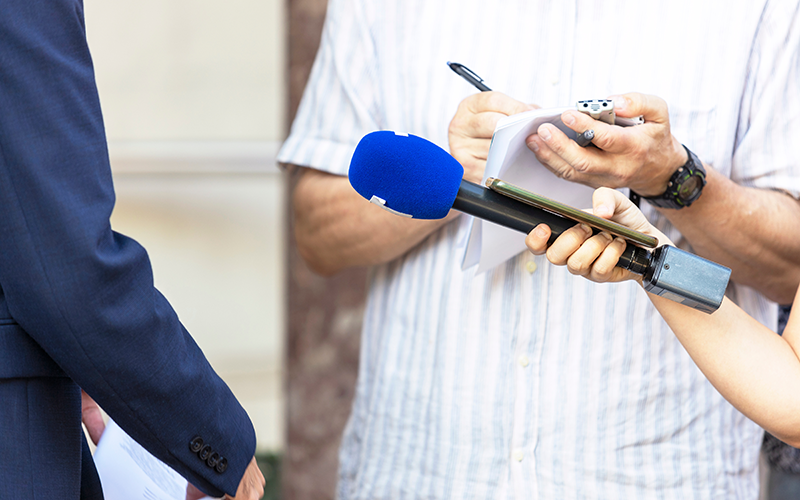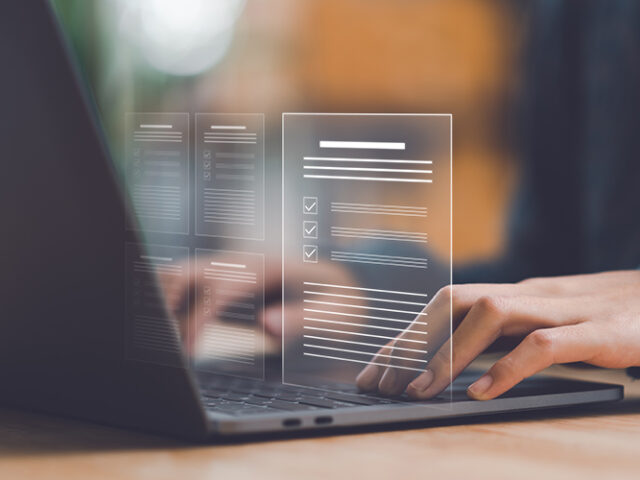The question of whether to ‘go digital’ or keep to the charms of analogue equipment comes up in journalism, particularly when note taking at industry events. This opinion piece by Sam Holland discusses the difference between modern systems and the good ol’ fashioned pen and paper, and ultimately considers whether modern tech can help to find a balance between the two!
As the Editor of Student Circuit’s sister site, Electronic Specifier, I attend industry events (such as Hardware Pioneers) that are often crucial for researching current trends in engineering. These events are a chance for journalists such as me to attend conference talks and workshops, as well as carry out visits to various trade stands where different members of the industry introduce their companies and products.
In the latter instance, I sometimes need to consider a question before I approach such trade stands: do I use my smartphone to record the conversation with the spokesperson at their booth, or do I simply grab a pen and notebook and jot down the keywords and concepts of the conversation as best I can? Such a question does not just relate to etiquette (I have to ask the person if they’re comfortable with me recording them, which many people feel uneasy about even when they oblige), but also the changing times. This is the ever-growing shift from the analogue to the digital – and both have their pros and cons.
The pros and cons of voice recording and traditional note taking
As mentioned, journalists at trade events have the option to voice record (or even video) their interviewees on the conference floor, but only if those spokespeople grant their permission. That has an initial flaw: the exhibitor may be thrown off of their meeting me the moment that I ask them if I can record their answers. Even the best press etiquette can’t change the fact that many people don’t like having their voice recorded, especially when the recorder is a smartphone. After all, even in such a specific, professional context, the fact remains that it’s often seen as impolite to have your phone out when you talk to someone.
Nevertheless, voice recordings are invaluable to industry research: most importantly, they give the journalist the chance to listen back to exactly what the interviewee had to say. Because even the best handwritten note taking can’t compete with hearing advice, potentially repeatedly, ‘straight from the horse’s mouth’. On top of this, it is now very quick and easy to have voice recordings automatically transcribed by the latest speech-to-text software, which means that both audio and written input can be maintained after an interview is completed. But do these recording and transcription services render handwritten notes obsolete?
From experience, I would say that there are two main reasons why the good ol’ fashioned pen and paper cannot be fully replaced even by the best recording and speech-to-text software:
The use of a pen and paper allows me to take notes my own way. This means that I can write, draw, or even colour code in any way that could reinforce the speaker’s message, as well as my personal understanding and memory of the exchange. Meanwhile, a voice recording-turned-transcript will simply involve the software applying its best guesses at what was said without any input on context. And context is vital, because the very intonation of the speaker’s voice could determine whether the speaker is serious, passive, sarcastic, and so on. I could easily reflect on such nuances in my handwritten notes, but a transcription service doesn’t have (and may in fact never have) anything like the cognitive faculties that humans have to achieve this. Instead, it would simply attempt to produce verbatim what the interviewee said, and even then, the accuracy of which this speech-to-text process is achieved varies from person to person (especially when a strong accent and language barrier applies).
Using a pen and paper together works like a prop. To me, if there is one thing that comes to mind when I think of a journalist, it is their notebook. This is crucial because aside from my handwritten notes helping me to feel focused on the interview, my concentration on notetaking will also show respect to the interviewee who has taken the time to introduce themselves, their background, and their projects. And again, this is a question of etiquette. What would you prefer to see if someone is asking you questions about you and your work: someone nodding as they thoughtfully jot down their notes on your input, or someone simply holding only the ubiquitous smartphone – or perhaps even worse, poking a microphone in your face?
Of course, deciding on what note taking equipment helps or hinders press interviews depends on both the interviewer and their interviewee’s preferences. Some spokespeople may even prefer to be able to talk into a microphone because it could give them reassurance that their words are their own, and could not be lost in translation throughout the exchange.
Meanwhile, some exhibitors may be new to public facing and find any form of recording equipment unnerving! In view of such a wide spectrum, I’ll now address the question of what designers are doing to attempt a happy medium in note taking technology: one that has the intuitiveness of a pen and paper, but with the efficiency of automated software. After all, even if a journalist uses shorthand, their frantic scribbles as they think on their feet could never compete with the processing power of a voice recorder that quickly and effortlessly absorbs audio without having to comprehend (let alone think twice about) the interviewee’s input.
In closing, let’s now look at two technologies that may just about offer journalists the best of both worlds: paper tablets and automated note taking software.
Paper tablets and automated note taking
Paper tablets (or ‘E ink tablets’) are electronic tablets that attempt to recreate the feeling of a pen on paper by replacing the two with a stylus and a paper-like screen. In and of itself, this may sound like a needless example of digitisation: if you want the feeling of handwritten note taking, why don’t you just use a normal notebook? But the fact is that this is just the core user experience: the unique selling point of paper tablets is that the charm of traditional note taking is met with the processing capabilities of modern technology. Paper tablets allow users to file their ‘paperwork’ in on-screen, labelled folders. Plus, they can even convert your handwritten notes to digital text (although it will struggle to do so with borderline illegible notes, so people with handwriting as bad as mine need not apply). Many journalists and other researchers may find this a more lightweight and convenient approach to what would otherwise require the fiddly job of flipping through unnumbered notebook pages and trying to decipher the scribbles.
I personally predict that we will see more and more of these paper tablets as the demand for reduced deforestation marches on with the times.
Plus, there’s more to the digitisation of the notepad owing to designers’ increasing use of artificial intelligence in documentation. One example of this approach to productivity is known as document automation. Document automation is the process by which fields of data, such as questionnaire responses, are automatically integrated into paperwork through the use of AI. Currently, such technology is mainly being used to enhance the documentation of fairly clear-cut areas of industries, such as sales lead generation and legal contract drafting.
However, the very capacity for software to document human-generated data shows a lot of promise for what it could bring to the future of note taking and other areas of research. Perhaps the next few years will see a significant increase in human-machine collaboration whenever journalists and other researchers need their notes to become more systematic and sophisticated.
This article has considered note taking equipment in the context of journalism, but let’s not forget that journalists are essentially just researchers who report on their notes! And students are researchers too, of course. With this in mind, one frequent piece of advice that engineering students are given is to attend industry events and learn from the pros on the conference floor. Here’s hoping that the next few years will see improvements in how undergraduates can collate their information out in the field.
Plus, more information on modern note taking systems can be found at Student Circuit’s sister publication, Electronic Specifier. ES has its own E-Learning (electronic learning) column that has articles – such as this one on learning management systems – that discusses how engineers and manufacturers are utilising technology to improve student’s engineering education!




